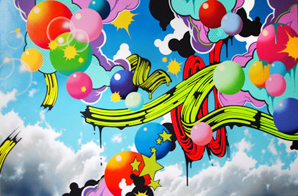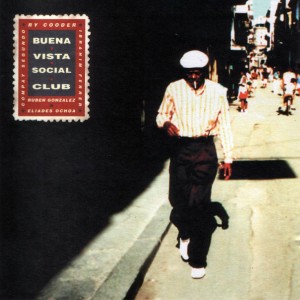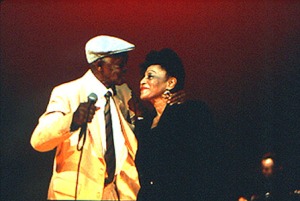
Como Fue – Benny Moré
Fueron tus manos o tu boca
fueron tus ojos o tu voz
o a lo mejor la impaciencia
de tanto esperar tu llegada
Mas no sé
no sé decirte como fue
no sé explicarme que pasó
pero de ti me enamoré
fueron tus ojos o tu voz
o a lo mejor la impaciencia
de tanto esperar tu llegada
Mas no sé
no sé decirte como fue
no sé explicarme que pasó
pero de ti me enamoré
*
Was it your hands or your lips,
Was it your eyes or your voice,
maybe it was impatience
after waiting so long
for you to arrive.
I don’t know anymore,
I can’t tell you how it was,
I can’t explain what happened,
but I fell in love with you.
Was it your eyes or your voice,
maybe it was impatience
after waiting so long
for you to arrive.
I don’t know anymore,
I can’t tell you how it was,
I can’t explain what happened,
but I fell in love with you.
Cuba, 1953. Benny Moré is singing with Ernesto Duarte Brito‘s Orchestre for Radio Progreso in Havana, eager to capitlise on the new batanga craze in the nightclubs and on the radio. Benny is to sing the lead vocal on a new bolero entitled Como Fue (how it was). In his heart he is longing to have his own band, his own orchestre, hiring the musicians, the backing singers, choosing the material and recording his own arrangements. The following year all that would happen. But he is already a star in Cuba. Benny, born Bartolo, was the oldest of 18 children from Santa Isabel de las Lajas, in Pueblo Nuevo province; his parents moved and he was raised in Camaguey and learned to play guitar and tres while working in his mother’s laundry. Eventually he arrived in Havana, by now singing second vocal in small busking bands. The great Cuban bandleader and songwriter Miguel Matamoros heard him singing and in 1945 he was asked to join the famous Trio Matamoros group, who’d been making hits since 1928. Like many before him he trod the familiar path of success to Mexico where he was convinced to change his name to Benny (Bartolo is a donkey’s name in Mexico). Benny meets the great Perez Prado, el Rey de Mambo another Cuban playing in Mexico and recording for RCA Victor. They cut a number of classic sides together before Benny Moré, now known as El Barbaro del Ritmo, returned to Havana, homesick, in 1950.



And he continues to cut hit after hit after hit, all in different styles – cha-cha-cha, bolero, son, mambo, guaracha, batanga, rhumba. His voice is sweet and masculine, expressive and lyrical. The music is wonderful, and now he writes his own songs too. In the 1950s Cuba was in the midst of a civil war, Fidel Castro had returned from exile in Mexico with Che Guevara alongside him and together they led a revolution which led to Fidel being named El Presidente in 1959. He was still El Presidente when Jenny and I visited Cuba in late 1999/2000 for the new year holiday some 40 years later. We were tired of the eternal build-up to The Millenium, and thought we’d escape the hype for a few weeks.
 I’d been working for Channel 4 on a 6-episode series spin-off from the movie called Lock Stock and… playing an East End wide boy gangster called Miami Vice with shaved head and Bow Bells accent. This was only a handful of years since I’d worked with the late great Warren Clarke in A Respectable Trade (see my Pop Life #122 ) and he’d advised me how to negotiate a deal (the only actor to ever share this kind of information with me). I auditioned for the fabulous Sheree Folkson, got an offer and asked the agent (lovely Fiona M at ICM) for double what they’d offered. She scoffed in disbelief at my chutzpah : “Well you’ll never get that Ralph“. I responded with the best possible response : “I won’t be doing the show then, no skin off my nose.” She was furious, but a week later I got what I was asking for. You have to know your worth, and god bless him, Warren Clarke taught me that.
I’d been working for Channel 4 on a 6-episode series spin-off from the movie called Lock Stock and… playing an East End wide boy gangster called Miami Vice with shaved head and Bow Bells accent. This was only a handful of years since I’d worked with the late great Warren Clarke in A Respectable Trade (see my Pop Life #122 ) and he’d advised me how to negotiate a deal (the only actor to ever share this kind of information with me). I auditioned for the fabulous Sheree Folkson, got an offer and asked the agent (lovely Fiona M at ICM) for double what they’d offered. She scoffed in disbelief at my chutzpah : “Well you’ll never get that Ralph“. I responded with the best possible response : “I won’t be doing the show then, no skin off my nose.” She was furious, but a week later I got what I was asking for. You have to know your worth, and god bless him, Warren Clarke taught me that.
Benny Moré
So we could afford to fly to Havana. We flew Air France, and I Will Never Fly With Air France Again. EVER. We flew to Paris and missed the connection to Havana because they didn’t announce it in the lounge. We were put up in a hotel at Orly airport, flown to Madrid the following day and put up again at an airport hotel. Now given money to buy underwear and other essentials we eventually arrived in Havana three days after leaving the UK, and with all our bags having been lost en route. It meant we had to take a taxi to the airport EVERY DAY to see if our bags had turned up. One by one they came in, but one bag never did appear. Things. Just stuff right. But wait.
We hook up with Carlos y Manolo, a gay couple who worked in the theatre and travelled internationally with their productions, representing the art of Cuba abroad, all sanctioned and paid for by the government.
They were kind of bourgeois for Cuba but they had no money. None. But Manolo still bought us a bottle of rum very early on which cost him a week’s wages, and then took us shopping to buy some clothes since ours hadn’t arrived yet. We spent most of the holiday in their company, drinking with their friends, eating at their Auntie’s paladar (house restaurant) on New Year’s Eve with John Singleton and his partner, who were also staying at the hotel Isabel in the old town. He said that Jenny looked like his Aunty Jessie. We took that as a compliment. It was that kind of night : but that night is for another post, because it went on all night, dancing to Celia Cruz and Whitney Houston.

Havana, Cuba
This blog is about how it was. Como fue. We moved out of the hotel into a room in Manolo’s uncle’s apartment in a different neighbourhood where there were no tourists. We fancied the experience of living with Cubans. What an amazing city Havana is. Like an old lady who was stunningly beautiful when she was young, there is a kind of eternal charm and grandeur about the architecture and wide boulevards, the 1950s taxis, the sexy locals, the mix, the music, the Caribbean, the parties.
We met Amanda Oom‘s friend Gregor who had a photographic exhibition in Havana and whom we’ve since met many times in England and in Stockholm. He is now partnered up with lovely Petronella from Norway. I wrote about the magic effect of Ooms in My Pop Life #14 .
But look – we’re talking about a city which has Che Guevara as an official heroic figure. The ironies are profound. Havana has two distinct economies – local, and tourist. At one ice-cream shop I was charged the local price – about 2p – for two ice-creams, because they thought that Jenny was cubana and that I had bought her. Christ that was revealing and horrifying. But there was more to come.

Havana streets
At some point in the first week of 2000AD we had a phone call from Jen’s sister Lucy to call her back. She was looking after our house in Brighton. We’d been burgled. Someone had broken in and stolen loads of our stuff. She was shocked, and so were we. Jenny wanted to go back immediately, break the holiday – we were due to travel south to Santiago and other parts of the country – I wanted to finish the holiday. We hadn’t been to The Tropicana yet to see the big band. Jenny explained that Lucy needed to see us and be relieved of her horror, and insurance had to be dealt with and all that. Stuff was missing : stereos, TV, carpets, hundreds of CDs, jewellery from upstairs. We changed our return flight with wonderful Air France and on our last full day in Havana decided to visit the church Our Lady Of Regla which was a ferry ride across the harbour.

On the ferry, which was rickety and ‘full of character’ we noticed a woman standing by the side of the moving boat muttering as if in prayer. She looked pretty intense but in her own world, then she started to break up pieces of coconut and drop them into the water. Jenny whispered to me : “She is blessing our crossing“.
Regla, a mainly poor and black neighbourhood. No tourists here. Although it was in the book, so now I imagine it’s swamped. But that afternoon it was just us at the old 17th century church with a black madonna and child above the altar. And a history of santeria, the religion of the Yoruba transferred to the Caribbean and merged with Catholicism. The black Madonna itself has a curious and fascinating history.

St Augustine of Hippo & his mother St Monica on a stained-glass window in Washington D.C.
Saint Augustine is said to have had a vision instructing him to erect a statue of a black virgin Mary, and he did so in Hippo, (present-day Annaba in Algeria) in 415AD. When Vandals attacked Hippo 30 years after Augustine’s death, monks lifted the statue and fled. The black Madonna appears most famously in Santiago de Compostela in Galicia, Spain, and in Monserrat near Barcelona, but interestingly she also occurs in Poland, France, Germany, Romania, Kosovo, Serbia and Russia, and in Orthodox Churches as well as Catholic; in Prague, in Brazil, in Chile and in Havana.

the black madonna of Czestochowska, Poland
They mainly date from the Byzantine era (say 14th century), but not exclusively. What they represent, apart from the obvious, is unknown, thus a pile of speculative and conjectural literature has emerged to further enlighten us. We just sat there in the front pew and soaked it all in. The holiday was over. We’d been robbed. We were still rich tourists in an incredible communist nation which had first-class healthcare, but no freedom to travel. Our friends hated Castro but were proud of being Cuban. And we’d had an amazing time.

Our Lady Of Regla
And then the woman from the ferry came up the aisle of the church and kneeled just in front of us to pray at the altar, to the black virgin. That was when we noticed her shoes – because she was kneeling we could see the bottom of her shoes. And carved into the soles of her shoes were words in English. They said :
TO HAVE, OR NOT TO HAVE
I kid you not. It was for us, clearly. We looked at each other and squeezed hands. The universe works in mysterious ways. The intellectual part of my brain immediately connected this with the Ernest Hemingway book To Have Or Have Not written in 1937 which concerns a contraband smuggler working between Key West and Havana, later filmed with Humphrey Bogart & Lauren Bacall and set in Martinique. The non-intellectual part of my brain could only wonder what on earth was going on, because a profoundly strange thing had just occurred. To have, or not to have. Right there in front of us, in English, carved into the rubber soles of her shoes. I can’t remember if I took a photograph or not. We were stunned.
I asked the woman if she knew that she had English on her shoes but she didn’t speak English and didn’t want to discuss it at all.
We got back onto the ferry and crossed the harbour. Went to the centre of Havana and found a music shop, asking in halting Spanish for the best Cuban music, please. The man produces a CD for me called 20 Boleros De Oro by Beny Moré. 20 Golden Greats. Benny only has one N in Cuba. This is the best he confirms. I buy it, along with some other vintage music from Trio Matamoros and Arsenio Rodriguez, and some more up-to-date stuff by Los Van Van.
The following day we say our goodbyes to Carlos and Manolo and vow to return, which we never have. We’ve seen them in the UK since then, and handed their number out to all of our friends who’ve visited Havana. This year relations with the USA thawed mightily and tourism was pumped up. People can visit their families in Florida. Castro is no longer El Presidente but his revolution is still alive, just.
Benny Moré died in 1963, singing to the last, coughing blood but determined to fulfill his obligations. He was 44 years old. He left behind an incredible body of work which has massively dominated Cuban music in all its complexity and richness. See Buena Vista Social Club, and watch Ibrahim Ferrer singing Como Fué below. He was a huge natural talent, and his music reaches across the language barrier, the cultural divide, the intellectual codification. You could do worse than seek it out for yourself.
We flew back to Heathrow from Paris, and Air France once again lose one of our bags. We arrive back to a house which has been emptied of it’s STUFF, but it is still our house. I cannot explain fully, how it was.
como fue, no se dicerte, como fue
the song :
Benny Moré sings Como Fue live :
Ibrahim Ferrer singing Como Fué with Ruben Gonzalez on piano :
rare footage of Benny Moré conducting his band 1950s, Havana :

 The accompanying LP had been released two years earlier in 1997 with Ry Cooder producing and his son Joaquim on drums and percussion. It was an instant classic, most particularly the opening track “Chan Chan” which became ubiquitous in coffee-shops around Brighton and parts of London (and indeed the entire world). The aging stars all became actual stars, and one of the more moving scenes in the film is the musicians arriving in Manhattan and marvelling at the architecture, presumably never dreaming they’d visit New York City. Compay Segundo played tres and sang, Ruben Gonzalez piano, Cachito Lopez was on double bass, Eliades Ochoa was on guitar and vocals, Ry Cooder played slide mainly and Ibrahim Ferrer and Omara Portuondo sang.
The accompanying LP had been released two years earlier in 1997 with Ry Cooder producing and his son Joaquim on drums and percussion. It was an instant classic, most particularly the opening track “Chan Chan” which became ubiquitous in coffee-shops around Brighton and parts of London (and indeed the entire world). The aging stars all became actual stars, and one of the more moving scenes in the film is the musicians arriving in Manhattan and marvelling at the architecture, presumably never dreaming they’d visit New York City. Compay Segundo played tres and sang, Ruben Gonzalez piano, Cachito Lopez was on double bass, Eliades Ochoa was on guitar and vocals, Ry Cooder played slide mainly and Ibrahim Ferrer and Omara Portuondo sang.





